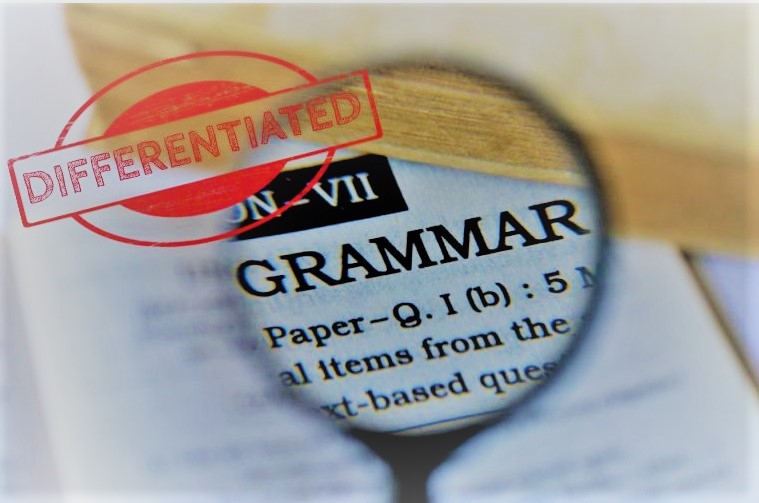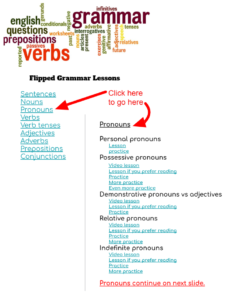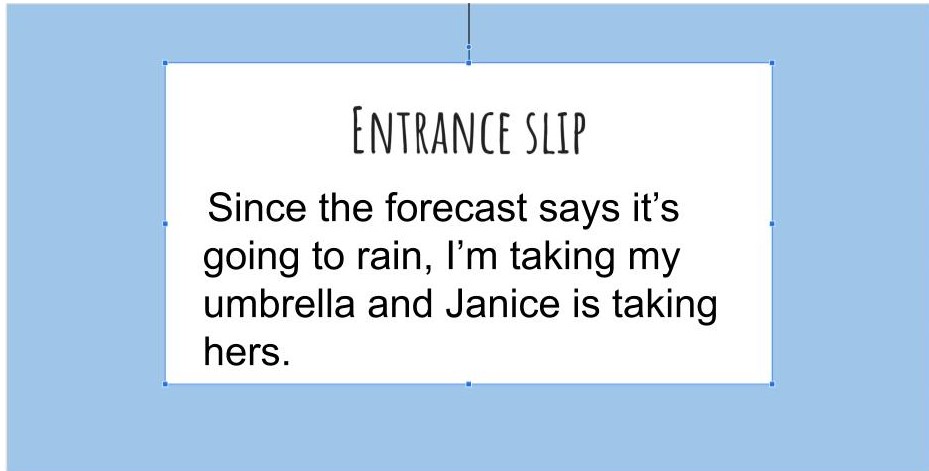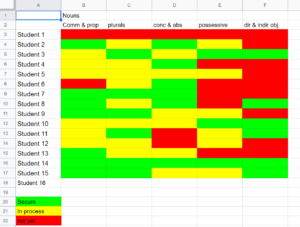Differentiated Grammar Lessons
 I have a confession to make: I’m a language arts teacher who has always dreaded teaching grammar. Part of the reason was that my students were all over the place in their levels of understanding, so I often felt like I was boring many of them while leaving others in the dust. Over the years, I’ve tried to differentiate my grammar lessons, but most of my attempts were overwhelmingly time-consuming and almost entirely teacher-led. This year, however — with some tweaking — I finally created a differentiated grammar class that puts students in the driver’s seat and actually seems to work for me.
I have a confession to make: I’m a language arts teacher who has always dreaded teaching grammar. Part of the reason was that my students were all over the place in their levels of understanding, so I often felt like I was boring many of them while leaving others in the dust. Over the years, I’ve tried to differentiate my grammar lessons, but most of my attempts were overwhelmingly time-consuming and almost entirely teacher-led. This year, however — with some tweaking — I finally created a differentiated grammar class that puts students in the driver’s seat and actually seems to work for me.
In our school, each year we actively teach three to five new grammar terms. For example, in 11th grade, students are expected to learn verbals and the function of participles, gerunds, infinitives, and appositives. We also do weekly reviews of grammar terms that were covered in previous years. However, for some students, those reviews seem like completely new information that they’ve never seen before. Differentiated grammar to the rescue!
Here are the steps I’ve been taking to build a differentiated grammar class:
Step 1 – Pretest
- I choose an area of grammar to work on — for instance, pronouns — and give my students a pretest to check current comprehension. The pre-test will cover different sub-topics such as: personal pronouns, possessives, demonstratives, etc.
- I hand back the pretest so that students can see where they’re strong and what they still need to work on.
- I let them know that they have two weeks to review their areas of weakness using our flipped grammar lessons and then we’ll have a quiz.
 Step 2 – Flipped Lessons
Step 2 – Flipped Lessons
- In Google slides I’ve created “Flipped Grammar” lessons (in case they’re new to you, flipped lessons are videos or other lessons that students can work on independently). In the example to the left, students can click on “pronouns” which will take them to the page with pronoun exercises.
- Each section has links to video tutorials, written tutorials (for those who prefer to read), and practice exercises.
- Students are in charge of their own learning and can work on the lessons they need to review during our class’s independent work time or for homework. Of course, some students don’t take the time to study on their own, but I’ll work with them individually after the test.
Step 3 – Ongoing Practice
During the two weeks before the quiz, I give ongoing practice in class. I use entrance slips to do quick self-assessments and to do short 2 minute reviews of the grmmar points. I also have students work on short weekly grammar exercises.
- Entrance slips
- In class, I give short grammar questions as entrance slips. For instance, I might give the following entrance slip:

- In class, I give short grammar questions as entrance slips. For instance, I might give the following entrance slip:
-
- If everyone gets the entrance slip correct, I congratulate them and we move on. But some students may write “it’s” as a pronoun. In that case, I’ll ask students to identify the possessive pronouns and then explain why they’re possessive or not. Our review consists of students discussing the answers (and often arguing and looking up rules in our handbook), leading to a lot of “ah-ha” moments. I find these discussions to be far more effective and engaging than another grammar mini-lesson.
- I pass back the entrance slips and let the students who didn’t get them correct know that they should go back to the flipped lessons and study.
- Grammar exercises
- Once a week I give students short, one-page exercises on the topic we’re covering.
- Grammar exercises are completed individually in class. Students can ask me for help, or use a grammar handbook for information, but they can’t help each other.
- Students evaluate their work and check to see how they did. They use this information to see if they still need to work on some areas of the flipped class.

Step 4 – Checking for Mastery
- After two weeks of practice, I give a grammar quiz.
- When I grade the quiz, I take note of where students are in their learning by filling in a colour-coded Google Sheet. At a glance, I can see who still needs help and exactly where they need that support.
Step 5 – Individualized Teaching
- While students are working independently, I’ll pull small groups aside to go over a grammar point. For instance, in the above example, I’ll meet with student 1, students 3 – 6, and students 10 – 12 to review common and proper nouns.
- Because most of the students are developing in this area, I’ll probably have a quick review with them and then send them off. Students 1 and 6 seem to be more confused about nouns so I’ll spend a little more time with them.
I also make sure to reinforce grammar terms by using them in writing conferences. Instead of saying, “Can you use a stronger word?” I’ll say, “You tend to use adverbs to strengthen your weak verbs. How about trying to use a stronger verb so that you don’t need the adverbs?” Or I might say, “Hmmm, I’m confused by this pronoun. I’m not sure who you’re referring to. Where’s the antecedent?” Making the grammar terms a part of our ongoing conversation helps students incorporate them into their daily language.
I can’t tell you what a difference differentiated grammar lessons made to my class. Now I can spend more time focusing on grammar as an editing tool, rather than teaching dry lessons. I’m actually happy to teach grammar now! I realize that there are probably as many ways to differentiate as there are teachers, so if you have strategies that you use, I’d love it if you would share them in the comments. Let’s learn together!

Leave a comment